Click the blue text to follow us Definition of Variables and Constants in C Language
Definition of Variables and Constants in C Language
1. Variables
1.1 Definition and Rules of Variables
In C language, a variable is the basic unit used to store data in a program, essentially a named space in memory. The definition of a variable must follow these rules:
1. Declaration format: data type variable name;
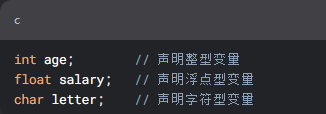
2. Naming conventions:
– Composed of letters, numbers, and underscores
– Cannot start with a number
– Case-sensitive (Age is different from age)
– Cannot use C language keywords (like int, if, etc.)
– It is recommended to use camel case or underscore naming conventions
3. Scope rules:
– Local variables (declared within a function): valid only within the code block where they are declared
– Global variables (declared outside of functions): visible throughout the entire program
1.2 Characteristics of Variables
– Variability: The value of a variable can be modified multiple times
– Type safety: Data types must be explicitly defined
– Memory allocation: The system allocates fixed memory space based on the type
– Lifecycle:
– Automatic variables: created/destroyed with function calls
– Static variables: persist throughout the program’s execution
1.3 Initialization of Variables
Initialization is the process of assigning an initial value to a variable at the time of declaration:
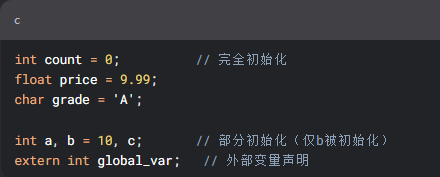
Uninitialized variables:
– Global variables: default initialized to 0
– Local variables: value is random (which may lead to logical errors)
1.4 Example of Variable Definition
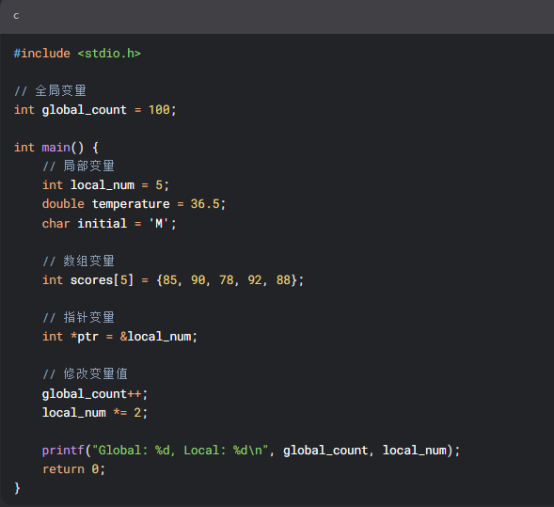
2. Constants
2.1 Definition and Rules of Constants
A constant is a fixed value that cannot be modified during the program’s execution, and it can be defined in three main ways:
1. #define preprocessor directive

2. const keyword

Rules require:
– Must be initialized and cannot be modified afterwards
– It is recommended to use uppercase naming
– Macro definitions have no type, while const constants have type checking
2.2 Characteristics of Constants
– Immutability: The value cannot be modified after definition
– Compile-time replacement (macro definition)
– Type safety (const constants)
– Memory optimization: may be optimized by the compiler to direct literals
– Improved readability: using meaningful names instead of magic numbers
2.3 Initialization of Constants
Differences in initialization based on different definition methods:
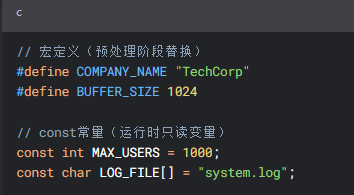
2.4 Example of Constant Definition
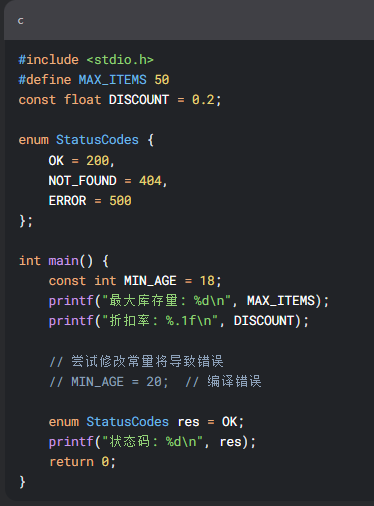
3. Differences Between Variables and Constants
|
Feature |
Variable |
Constant |
|
Variability |
Can be modified multiple times |
Cannot be modified after definition |
|
Memory Allocation |
Requires actual memory space |
May be optimized by the compiler to direct literals |
|
Initialization Requirement |
Can be uninitialized (not recommended) |
Must be initialized |
|
Type Checking |
Strict type checking |
Macro definitions have no type checking |
|
Storage Location |
Data area / Stack / Heap |
May be stored in the code segment |
|
Debug Visibility |
Visible memory address during debugging |
Macro definitions are not visible during debugging |
|
Usage Scenario |
Data that needs to change |
Fixed values / Configuration parameters |
|
Definition Method |
Type + Variable Name |
#define / const / enum |
|
Scope Rules |
Follows block scope / file scope |
Similar to variable scope rules |
3.1 Principles of Usage Selection
1. Prefer using const constants: improves code safety and readability
2. Use macro definitions cautiously: only for simple constants or conditional compilation
3. Enumerations are suitable for related constant groups: such as status codes, options, etc.
4. Variables are used for values that need to be calculated: such as loop counters, temporary calculation results.
4. Conclusion
Understanding the correct use of variables and constants is the foundation of C language programming. Variables provide flexible data storage capabilities, while constants ensure the stability and maintainability of the program. Developers should choose based on actual needs:
– Reasonably select variable types
– Initialize variables in a timely manner
– Widely use constants instead of fixed values
– Pay attention to scope and lifecycle management
By using variables and constants in a standardized way, code quality can be significantly improved, runtime errors reduced, and the readability and maintainability of the program enhanced.
Dreaming of Mountains and Rivers END
END
 C Language
C Language
The ink pool is a thousand acres of blue,
Breaking the waves one morning bright.